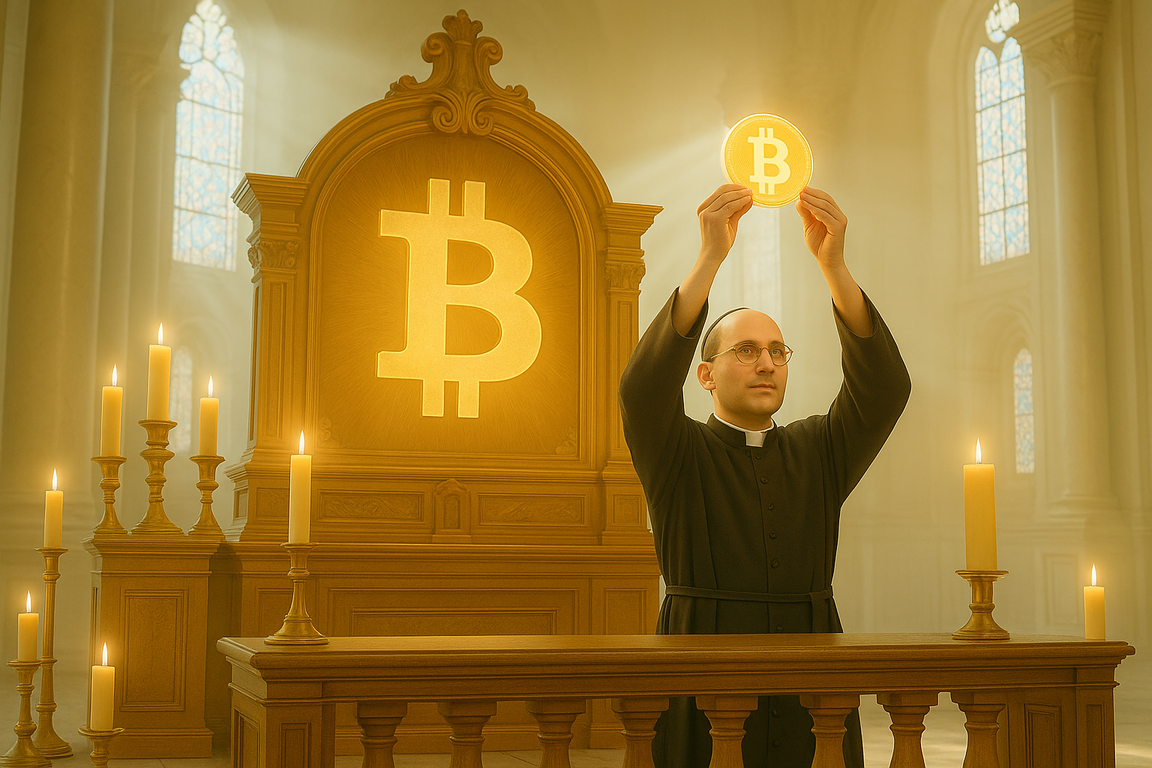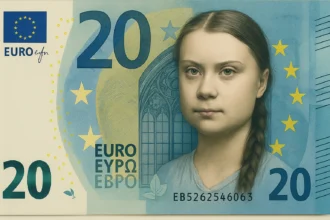In an unprecedented move that has sent ripples through both religious and financial circles, the Vatican has announced it will now conduct all its monetary transactions exclusively in Bitcoin. The decision, officially unveiled during a solemn press conference beneath the Sistine Chapel, marks a historic shift from the traditional Euro to what the Holy See calls the “divine currency of the digital age.” Experts and faithful alike are watching with bated breath as the Vatican embraces what many are calling “crypto divinity,” signaling a new era where faith and blockchain technology intertwine in divine harmony.
Vatican Embraces Bitcoin as Divine Currency, Replaces Euro
The Vatican’s bold step to adopt Bitcoin as its primary currency has stirred both awe and confusion worldwide. Vatican officials emphasize that Bitcoin’s transparent ledger system mirrors divine judgment—where every transaction is etched into eternity, visible for all to see, much like the Book of Life. “Decentralization aligns perfectly with spiritual freedom,” declared Cardinal Blockchainus, a newly appointed financial advisor whose surname seems suspiciously appropriate. The Holy See claims that Satoshi Nakamoto, the mysterious creator of Bitcoin, was “divinely chosen,” perhaps by angelic algorithms, to spearhead this spiritual financial revolution.
In Vatican City, everyday life is rapidly transforming to accommodate the crypto-centric shift. Donation boxes now feature engraved QR codes that accept Bitcoin only, turning the traditional collection plate into a high-tech altar. Priests are receiving their stipends directly in Bitcoin, with some reportedly blessing their wallets before sermons. Even the parking meters outside St. Peter’s Basilica have been converted to Lightning Network compatibility, allowing pilgrims to pay for parking with a quick tap and a Satoshi. The Vatican is also trialing confession booths where penitents can optionally pay “repentance fees” in satoshis—an offering that promises spiritual cleansing with a side of blockchain transparency.
Tourists are not left out of the crypto conversion craze; they can now purchase holy water NFTs—digital tokens that supposedly carry blessing magic, or at least serve as a digital souvenir. While the church maintains that participation is optional, insiders hint that embracing this new digital faith may be a prerequisite to truly understand divine grace in the modern age. The Vatican’s embrace of Bitcoin promises to blend centuries of tradition with the cutting-edge world of crypto, creating a spiritual economy that is as bewildering as it is groundbreaking.
Holy Ledger: Crypto Faith Sparks Miraculous Changes in Vatican City
The ripple effects of Bitcoin adoption are already evident across Vatican City, with changes both miraculous and amusing. The Holy See claims that their new “sacred blockchain” offers unparalleled transparency, mirroring divine justice—unlike the opaque Euro transactions of yore. Vatican officials have jokingly referred to Bitcoin as “the most blessed blockchain,” suggesting that Satoshi Nakamoto might be an angelic figure or perhaps a saint in disguise. Some insiders speculate that the Vatican’s move was inspired by a divine revelation, or perhaps an epiphany during a particularly prophetic prayer session.
Financial advisors within the Vatican are singing praises of the crypto revolution. “Bitcoin is a gift from the heavens,” said Father Cryptus, a Vatican economist, in an interview. “Its divine attributes—decentralization, scarcity, and transparency—embody spiritual virtues. Satoshi Nakamoto? We believe he is a mysterious saint, perhaps chosen by divine algorithms. His identity remains a heavenly secret.” The Vatican’s investment in digital assets has led to a surge in Bitcoin’s perceived holiness, with some faithful now praying for divine providence over blockchain markets. Ordinary Catholics are adjusting to this new financial doctrine, with many considering “tithing in satoshis” and offering digital badges of faith.
The world’s reaction has been a mix of bewilderment and curiosity. Italy, home to the Vatican, is officially confused, with some officials questioning whether this signals a new “holy financial era” or a divine glitch. The International Monetary Fund has announced it is “watching closely,” though many suspect it’s secretly plotting to understand this divine experiment. Meanwhile, crypto enthusiasts are planning pilgrimages to Vatican City, hoping to witness miracles of blockchain blessings firsthand. As the church aligns itself with digital divinity, one thing is clear: the age of crypto faith has truly begun, promising to turn the sacred into the somewhat surreal.
As the Vatican steps boldly into the realm of crypto divinity, the world watches a religious institution redefine its relationship with money and technology. Whether this move will usher in enlightenment or chaos remains to be seen, but one thing is certain: in the eyes of many, the Holy See has become the most blessed blockchain in the universe. With Bitcoin now serving as the divine currency, the sacred and the digital are more intertwined than ever—propelling humanity into an era where faith, finance, and fantasy converge in miraculous harmony.










